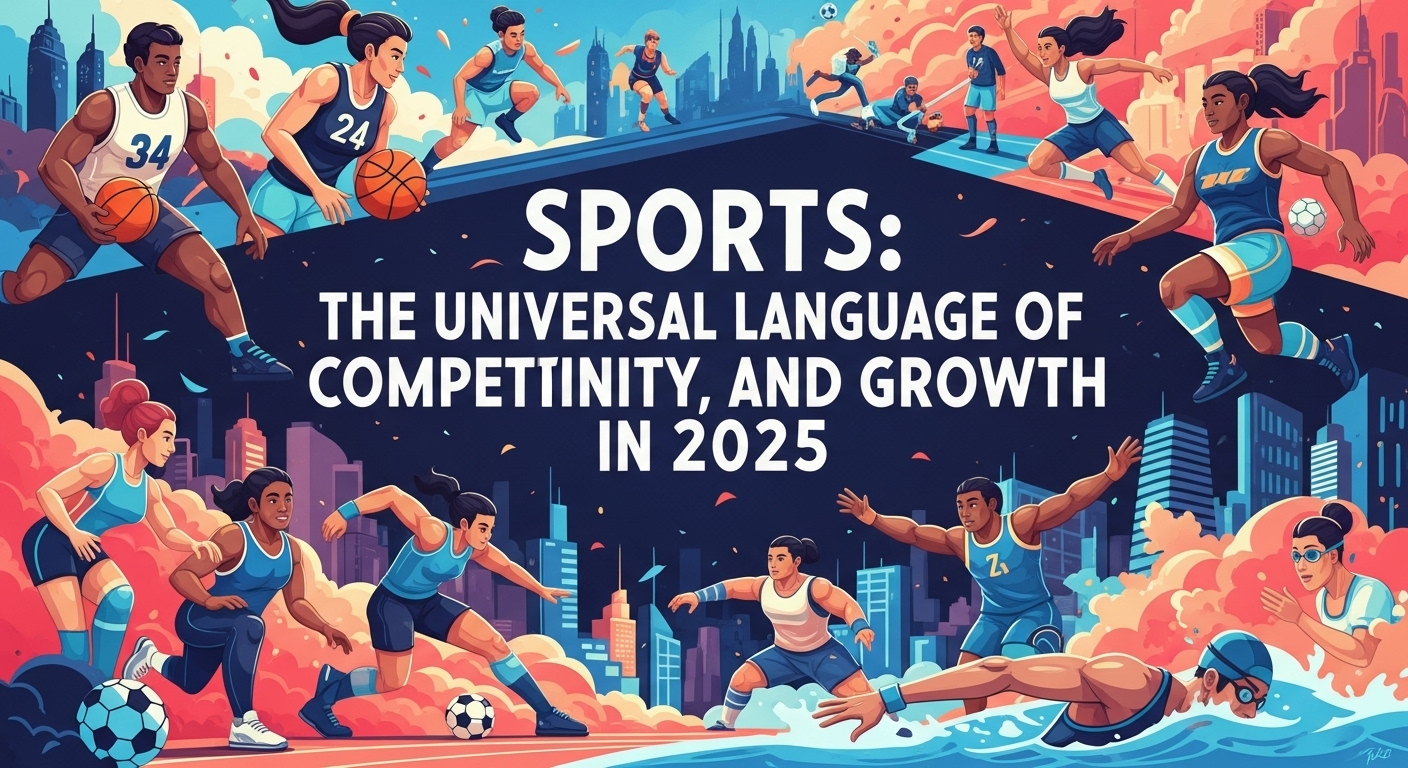The roar of the crowd, the perfectly executed play, the sheer joy of victory – “sports” are far more than just games. They are a fundamental part of human culture, embodying fierce competition, fostering vibrant communities, driving massive economic activity, and inspiring individuals across every demographic worldwide. As of mid-2025, the global sports landscape is more dynamic and technologically integrated than ever, continually reshaping how we play, watch, and connect.
The Multifaceted Nature of Sports
At its heart, sport involves physical exertion, skill, and competition, usually governed by a set of rules. However, its impact stretches far beyond the playing field:
- Physical Well-being: Sports are a cornerstone of health, promoting cardiovascular fitness, muscular strength and endurance, flexibility, and maintaining a healthy body weight. Regular participation is a powerful tool against chronic diseases and contributes to overall longevity.
- Mental Fortitude: Beyond physical benefits, sports build mental resilience. They teach discipline, focus, strategic thinking, stress management, and the ability to perform under pressure. The joy of victory and the lessons learned from defeat are crucial for character development. Studies in 2025 highlight how physical activity, especially organized sports, significantly reduces the risk of mental health problems like depression and anxiety across age groups, with research showing even short bursts of activity can have significant positive effects.
- Social Cohesion: Sports have an unparalleled ability to unite people. Whether as participants in a team, spectators cheering for a common cause, or communities celebrating national triumphs, sports break down barriers of age, gender, social status, and ethnicity. They foster a powerful sense of belonging and shared identity. Sporting clubs, for example, are crucial micro-communities that foster positive social behaviors and lasting friendships.
- Economic Driver: The sports industry is a massive global economy, projected to reach over $507 billion in 2025. This encompasses everything from professional leagues, broadcasting rights, merchandise, and sponsorships to sports tourism, infrastructure development, and the manufacturing of sporting goods. This ongoing economic expansion is likely to boost the demand for sports worldwide.
- Inspiration and Role Models: Athletes often become role models, inspiring millions with their dedication, perseverance, and achievements. Their stories of overcoming challenges motivate individuals to strive for excellence in their own lives.
Key Trends Shaping the Future of Sports in 2025
The world of sports is dynamic, constantly adapting to technological advancements and societal shifts:
- Technological Integration and Enhanced Performance:
- Wearable Technology & AI Coaching: Smartwatches, fitness trackers, and AI-powered apps are pivotal in monitoring performance metrics, providing real-time data on everything from heart rate to movement patterns. AI coaching applications, leveraging computer vision and advanced analytics, offer real-time feedback and personalized training plans for athletes of all levels.
- Immersive Broadcasting: Augmented Reality (AR) and Virtual Reality (VR) are transforming fan engagement, offering immersive experiences that bring the action closer than ever. AR overlays on broadcasts provide real-time stats and dynamic game-like visuals, while VR offers alternate broadcasts and game simulations.
- Video Assistant Referees (VAR): Already a familiar sight, VAR systems continue to be refined with more accurate AI algorithms and visualization tools, aiming to reduce disputes and ensure fairer outcomes in major competitions.
- Data-Driven Talent Scouting: AI analyzes player statistics, behavior patterns, and game footage to identify talent and assess potential, revolutionizing recruitment processes.
- Evolving Fan Engagement and Media Consumption:
- Personalization: Fans increasingly expect experiences that reflect their interests and habits. AI-led personalization, cloud production, and remote commentary are making custom content scalable, delivering tailored content without bloating budgets.
- Direct-to-Fan Models: Leagues and teams are building multi-platform ecosystems, including snackable content, personalized match recaps, and engaging directly with fans through creators, influencers, and their own digital channels. This is crucial for engaging younger generations (Gen Z and Alpha) who consume less traditional television.
- Esports Integration: Competitive video gaming (Esports) continues its rapid growth, attracting massive viewership and professional leagues. Many traditional sports organizations are investing in esports teams or creating their own virtual leagues to engage new audiences and tap into this expanding market.
- Growth of Women’s Sports: This is a major success story in 2025. Women’s sports are experiencing an unprecedented surge in viewership, investment, and professional opportunities across various disciplines. Leagues like the WNBA are seeing remarkable growth in avid fandom, and women now form a larger share of fans for both women’s and men’s sports globally. This growth is attracting significant brand investment from non-endemic brands in sectors like fashion and beauty, demonstrating its compelling commercial potential. Dedicated infrastructure and increased media coverage are key to its continued success.
- Sustainability and Social Responsibility: There’s a growing emphasis on environmental sustainability in sports, from eco-friendly stadium designs to reducing waste at events and promoting sustainable travel. Furthermore, sports organizations are leveraging their platforms to promote social responsibility, inclusivity, and community development, with many using sport for peace and development initiatives worldwide. Sustainable sports equipment, made from recycled or eco-friendly materials, is also gaining prominence.
- Participation Sports & Active Lifestyle as Identity: Fitness is becoming less of a solo pursuit and more of a lifestyle, a community, and a digital habit. The rise of hybrid training, AI-powered recovery tools, and platforms that blend digital and physical activities show how sport is embedding itself deeper into individuals’ identities. Social sports and community activities are becoming increasingly popular, fostering connections and shared experiences.
The Unifying Power
Sports, in all their forms, are a powerful force for good. They teach invaluable life lessons, promote healthy living, provide escape and entertainment, and most profoundly, they connect us. Whether it’s the shared anticipation before a major championship, the collective cheer of a victory, or the communal commiseration in defeat, sports foster a unique sense of belonging. The love for sports remains a vibrant testament to humanity’s competitive spirit and its profound need for connection and shared experience.

